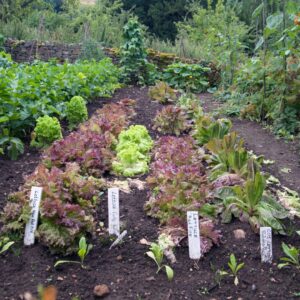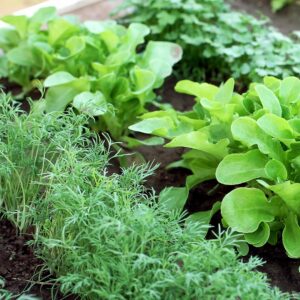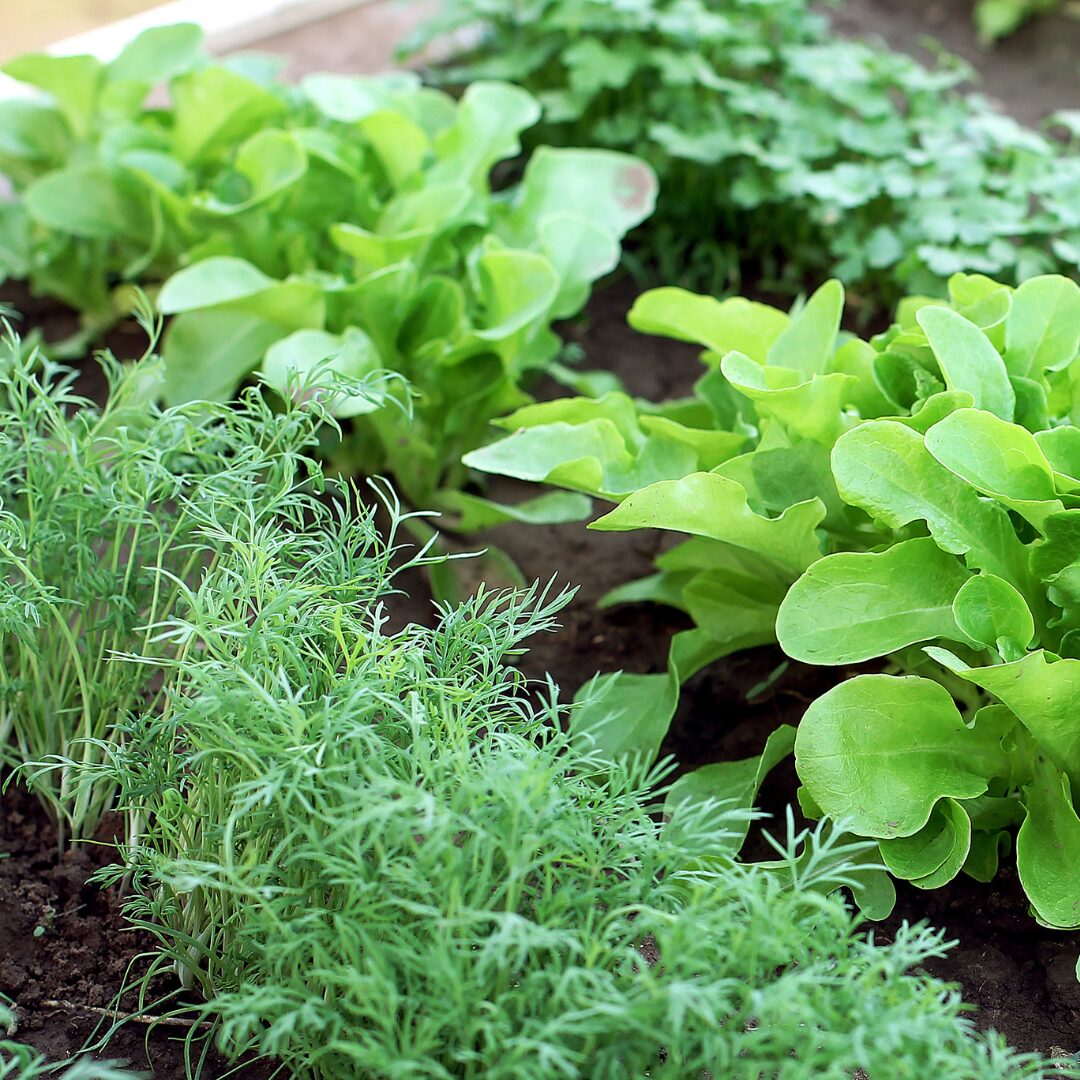.
Mixed cultivation, crop rotation, pre-, main and post-crops… it’s difficult for a beginner to understand how to make a planting plan for your vegetable garden. Where do I plant, what and when can I harvest are some questions that may feel overwhelming at the beginning.
Yet, it’s high time to deal with them and create a planting plan for the upcoming gardening season. It’s not as complicated as it may seem at first. Just follow the steps and you’ll create a planting plan in no time.
Ready to start? Let’s go!
Plan your vegetable garden
First, you draw a layout of your garden. If you have patches already draw them. If you start creating a vegetable garden from scratch, plan patches with a width of 1,20 metres. That way, you can reach every part of the patch without contorting.
If you want to add several patches, they should optimally be 1,20 metres long, but you can make them up to 1,8 metres. Also, add paths between the patches so that you can reach every part of them.
Determine the location
Before creating a vegetable garden, it’s important to determine the best location. Important things to consider are
- Distance to the house
- Sun
- Good soil
- Plain or slightly south-bend area
- Wind-break
Maybe you won’t find the ideal place for your vegetable garden, but that’s okay! Even if you had only a shadowy backyard for your vegetables, there’d still be some plants that grow well in the shade. Just consider this when planning your garden and you’ll still enjoy planting your veggies. Take what you have and make the best of it.
Once you’ve determined where your vegetable garden shall be, you can start making patches. It’s not too late to make new vegetable patches and plant them immediately. If you want to know how to start vegetable patches from scratch, check out this post.
Have you drawn the patches into your layout? Great, let’s move on.
What to plant
That’s easy: what you like. If you are a beginner, start with plants that are easy to grow. Herbs, lettuce, radishes, chard, beans, summer squash, beets, garlic and leek usually don’t make any problems and produce a good harvest.

Make a list of the vegetables you want to plant and how many you want.
Crop rotation
Different vegetables have different needs regarding soil and fertilization. There are plants with high nutrient demands like tomatoes and cabbage, medium nutrient demands like beets and low nutrient demands like peas and beans.
If you want to plant vegetables with high nutrient demands, it’s important to prepare the soil well, use compost and fertilize the plants. In the second year, you can plant vegetables with medium nutrient demand on this patch. They need less nutrients and profit from the fertilizer of the first year. In the third year, you plant veggies with low nutrient demand.
That said, divide your garden into three sections: one for plants with high, one for medium and one for low nutrient demands. Rotate these vegetables every year and use the nutrients optimally. Another benefit of crop rotation is that you minimize the danger of diseases. Would you plant the same vegetables at the same place year after year, the soil would exhaust, making it easier for pests and diseases to thrive.
So, take your list of vegetables you want to plant and categorize them into plants with high, medium and low nutrient demands. Here’s a list of vegetables and their category. Then determine which plants to grow where in your garden and prepare the soil for the high nutrient-demanding ones.
Mixed cultivation

Now that you know what plants to grow in which part of your garden, you have to determine which plants to pair. This is a bit like putting together a work team and – like in real life – some team members (or plants in that case) work great together and others loathe each other. To bring them together in an optimal way is called mixed cultivation and it’s a great way to hold pests and diseases at bay. Typical examples are carrots and onions: the carrot releases a scent that repels the leek fly and the onions release a scent that repels the carrot fly. Here’s a list of great mixed cultivation partners.
Note down great partners and disaster pairs, decide where to grow them and write them down in your garden plan.
The best is yet to come
Most vegetables don’t need the whole season to grow. Tomatoes for example are not planted before mid-May, that’s enough time to cultivate radishes and lettuce before. Almost any main crop, i.e. a vegetable group that occupies the patch for a long period, leaves time for a pre- or post-crop. Examples of main crops are tomatoes, potatoes, cucumbers and corn. By using the patches before and/or after the main crop for fast-growing vegetables you can harvest twice or even three times!
That’s why you should combine the different main crops with fast-growing pre and post-crops like radishes, spinach, lettuce and kohlrabi. Usually, it’s indicated on the seed bags when to sow which veggies. Using this information you can make a planting plan for the whole year and scale your harvest.
Note down in your plan how long the crops will take until they can be harvested and determine which places to use for pre and/or post-crops. It’s a bit like playing Tetris :-).
Grab your planting plan for your vegetable garden
Taking every of the above aspects into consideration when making a planting plan can lead to overwhelm. I, too, need several attempts until my plan is sound. I’m up to drafting out a planting plan for you, so stay tuned and come back!


0 Comments